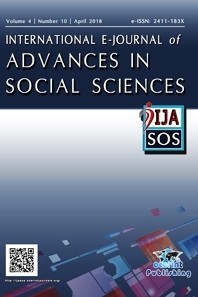
International E-Journal of Advances in Social Sciences
Yazarlar: Parisa Vahdatian
Konular:Sosyal
DOI:10.18769/ijasos.417807
Anahtar Kelimeler:Azerbaijan,Education,Employment,Equality,Gender,Human Development Index,Human development,Iran,Inequality,Turkey
Özet: This paper addresses existing gender parities and gaps in Iran, Turkey and Azerbaijan in terms of human development. Human development by enlarging people’s freedoms and potentials draws the attention to “ends” and insists on intrinsic significance of development. The main components of human development are: capabilities, free agency and achievements. Health, education and economic resources are essential indicators of Human Development Index (HDI) which share the same ratio in HDI value estimation. Gender inequality as a global phenomenon, increasingly focuses on women’s deprivation of education, health, income and social developments. This paper discusses Iran's educational developments in gender equality and compares female-to-male progresses in HDI indicators of Iran with Turkey and Azerbaijan. The main goal of human development and capability approach is equal distribution of capabilities and functionings among people. The exceptional status of education in having both intrinsic and instrumental values multiplies the significances of equal education in a global context. In addition to direct impact of education on total health and income rates, parity in education has the capacity to empower women and make them qualified for well-paid vocations. Iran from 1990 to 2015 has had a sustainable progress in health, education and per capita income. Iran has almost succeeded to close the gender gap in education, while it remains in achievements so far. In comparison to Turkey and Azerbaijan, raising women’s capabilities has led to their more achievements in terms of economic resources, labour force and politics. According to human development reports, Turkey in capability distribution has experienced more gender disparity than Iran. By filtering the health indicator, Azerbaijan has the best status in gender parity rather than Turkey and Iran. Turkish women’s high life expectancy at birth is the best among the analyzed countries. Unlike Iran, educated women in Azerbaijan and Turkey have lower unemployment rates than Iranian women. That is probably why women in Iran recently have less interest to continue their education in tertiary level and this disappointment has reproduced the gender gap.